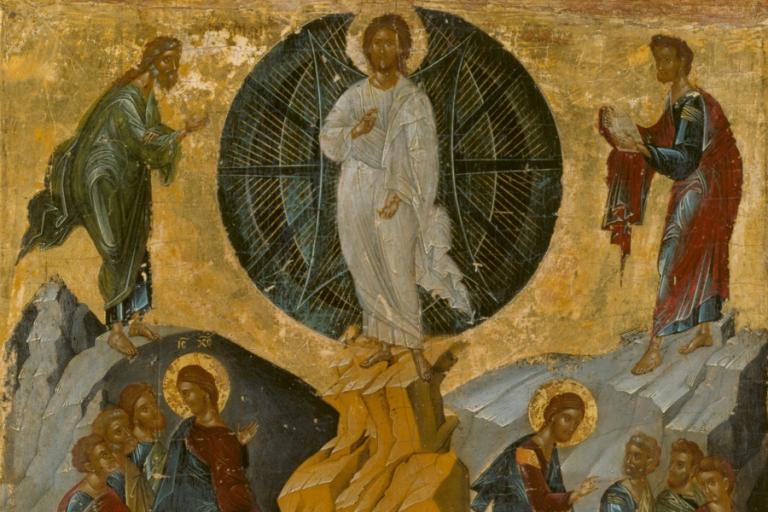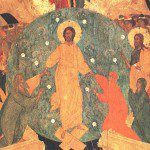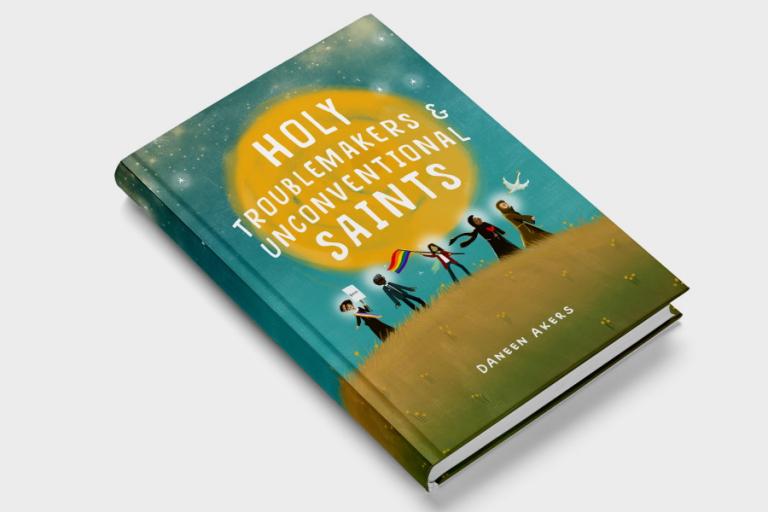This is part three of a series on WHEAT—an acronym to describe the Beautiful Gospel in a way that parallels the TULIP of Calvinism, the DAISY of Arminianism, and the ROSES of Molinism. See the previous articles if you haven’t already.

fifteenth-century icon, Wikimedia Commons.
As I said initially, the Beautiful Gospel is based on the foundational belief that God is perfectly revealed in Jesus. I also claimed that this is the very reason WHEAT differs so strongly from TULIP, DAISY, and ROSES. I want to unpack this idea a bit before examining the points of WHEAT in detail.
John’s Gospel tells us that Jesus is the Word of God. Or as Brian Zahnd phrases it, “Jesus is what God has to say.” The Word, Jesus, who was in the beginning with God and who is God, became flesh and lived among us (John 1:1–14). While the law was given through Moses, grace and truth came through Jesus (John 1:17). And John goes so far as to say that compared with the revelation of God in Jesus, “No one has ever seen God. It is God the only Son, who is close to the Father’s heart, who has made him known” (John 1:18, NRSV).
Jesus says of himself, “Whoever has seen me has seen the Father” (John 14:9, NRSV). And the author of Colossians says, “He is the image of the invisible God” (Colossians 1:15, NRSV).
So far, what we’ve covered is standard Christian theology. Every Christian tradition should agree that Jesus reveals God. But the rubber meets the road when the God revealed in Jesus conflicts with the God revealed elsewhere in scripture. Calvinism, Arminianism, Molinism, and most other Western branches of Christian theology have tended to assign equal authority to all portions of scripture. This has resulted in an inconsistent picture of God.
Though this God may at times be pictured as patient, not wanting any to perish, but for all to come to repentance (2 Peter 3:9), at other times, he is presented as being angry with the wicked every day, ready to use his sword if he does not first repent (Psalm 7:11–12). This is a God who at times sends down fire from heaven to consume over a hundred men (2 Kings 1:10–12), and at other times rebukes his disciples for making such a suggestion, saying, “You do not know what spirit you are of” (Luke 9:54–55).
The Beautiful Gospel asserts that while all scripture may represent the word of God in a secondary sense, only Jesus actually is the Word of God. Any picture of God that runs counter to the revelation of God in Jesus must bow to his authority.
This is what the Transfiguration of Jesus is all about (Matthew 17:1–8; Mark 9:2–8; Luke 9:28–36). After leading Peter, James, and John up the mountain, Jesus is transfigured before them. Then Moses, representing the Old Testament Law, and Elijah, representing the Old Testament Prophets, appear next to Jesus. And Peter, not knowing what he’s saying, suggests that they make three shelters, one each for Moses, Elijah, and Jesus, implying that all three be given an equal place of authority. But a cloud overshadows them, and God the Father speaks from heaven saying, “This is my Son, my Chosen One. Listen to him!” (Luke 9:35, NRSV). Then Moses and Elijah are gone, and only Jesus remains.
Jesus also alludes to this when he says, “You search the scriptures because you think that in them you have eternal life; and it is they that testify on my behalf. Yet you refuse to come to me to have life” (John 5:39–40, NRSV).
And the opening of Hebrews teaches this as well: “Long ago God spoke to our ancestors in many and various ways by the prophets, but in these last days he has spoken to us by a Son, whom he appointed heir of all things, through whom he also created the worlds. He is the reflection of God’s glory and the exact imprint of God’s very being, and he sustains all things by his powerful word” (Hebrews 1:1–3, NRSV).
So we cannot simply take every passage of scripture at face value, and form a disjointed picture of God from the combined whole. We must rather go to Jesus to learn what God is like, and interpret the rest of scripture in his light.
With this foundation in place, we are now ready to examine each point of WHEAT in greater detail, comparing and contrasting them with the points of TULIP, DAISY, and ROSES. In the next post, we’ll consider what it means for us to be “wounded children.”
All posts in the Beautiful Gospel of WHEAT series:












